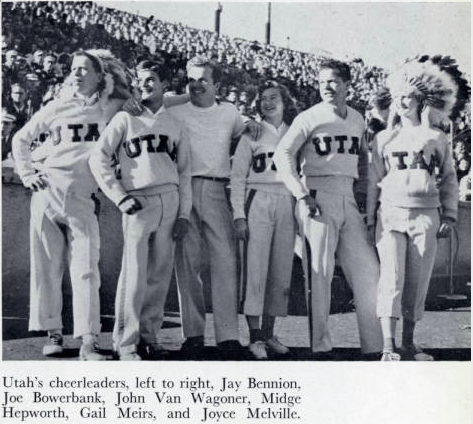Prior to the colonization of the western United States, Nunt’z (Ute) people lived in about 11 autonomous communities in the Great Basin for roughly 10, 000 years. These populations lived on the land that would later become the site of the University of Utah. Over its 175-year history, the university has maintained ongoing relationships with indigenous groups, particularly the Ute tribe. Native American Heritage Month this November provides a context for examining the history and development of this relationship. Early history The years 1892-1894 were decisive years for the U. It had been granted 60 acres of land by the federal government, changed its name and launched its athletics division. Athletic teams and students became known as “The Crimson.” “A series of confrontations, treaties (some not ratified), land cessions, removals and settlements occurred between the United States and the Utes from 1852 to 1953, revealing a complex history of resistance, conciliation and survival that resulted in the current political organization and land-base of the Utes,” the U’s Edna Anderson-Taylor Communication Institute said on their website. In 1927, as its football team started to gain traction, the U opened what is now the Rice-Eccles Stadium. Usage of terms like “Indians,” “Utes” and “Redskins,” also increased in reference to athletic teams and students at the U. Larry Gerlach, a former U professor and researcher, explains in a paper that indigenous depictions began to appear around 1927. In Gerlach’s research, he said that bronze plaques of Indian chiefs were included in the entrance to the U’s new stadium. Stereotypical images appeared in the school’s yearbook, “The Utonian.” The university began to use stories and images of the Northern Ute tribe. However, at that point, the tribe had not yet given permission to use the name. Mascots and names Twenty years later, the U’s first unofficial mascot started to appear across the university. This mascot a Native American boy was officially named Hoyo through an ASUU vote in 1947. Fred Esplin, a historian at the U and former vice president for Institutional Relations and Advancement, said that serious criticism of the mascot did not emerge until many years later. “The university used the Ute name, used an Indian mascot and used the Running Redskins as their name and logo for a long time in the ’40s and ’50s,” Esplin said. “By the time it got into the late ’70s and ’80s, it became clear that using an Indian mascot was a bad idea.” During the ’60s and ’70s around the same time the Red Power movement was growing in popularity students, faculty and alumni began to express concerns about the nature of the U’s nicknames and mascot. In 1972, Ho-Yo and the “Redskins” nickname were officially retired and replaced with the “Utes,” a nickname approved by the Northern Utes. In 1985, a new mascot emerged, with claims to be a “symbol” rather than a mere mascot. The “Crimson Warrior” was introduced. “It was a Native American student in loincloth on horseback, carrying a javelin, running out on the field and throwing it. That was problematic and of concern to a lot of Native American students,” Esplin said. A shift in opinion University leaders claimed that the new mascot would be a beneficial change for the U, but not everyone agreed. In a 1986 Chronicle article, writer Shauna Bona urged readers to reconsider the school’s mascot. “The whole purpose of mascots is to arouse school spirit through laughter, antics and display. Animals and fictional characters are conducive to this role’ human beings are not,” Bona wrote. In 1993, the university retired the live mascot and logo. In a statement to the U, former Native American Student Advisor Beverly Sutteer said the change was not enough. “This is not an honor. If the U wants to honor the Utes, they need to change their mascot,” she said. “They should also acknowledge that the land the U is sitting on was taken from the Utes by pioneers.” Ultimately, the U decided to create a new mascot, Swoop the Red-Tailed Hawk, but kept the Ute name. The early 2000s to today In 2003, the first written agreement between the Ute Tribe and the U developed, solidifying their partnership. The Memorandum of Understanding was created to implement “cooperative education programs and initiatives for the mutual benefit of the Ute Indian Tribe and the University of Utah.” Today, the U with permission from the Northern Ute tribe uses the licensed “Ute” nickname and a circle and feather logo. The university’s Indigenous Land Acknowledgement Statement is repeated at most major events. The U’s Center for Native Excellence and Tribal Engagement has a mission to “facilitate the social, academic, and cultural engagement of American Indian and Alaska Native students, staff, trainees and faculty,” according to its website. The center hosts community outreach events, learning opportunities, pow wows and more. The center’s director, Samantha Eldridge, said that the program “has a long history and legacy, not only [of] our center, but [of] supporting our Native students on campus.” “Unfortunately, more often than not, we get comments or questions about if Native Americans still exist. Our students are asked if they still live in teepees,” Eldridge said. “Heritage Month is really an opportunity to educate in the terms of we are here and making a difference.” [email protected].
https://dailyutahchronicle.com/2025/11/23/u-origins-indigenous-presence-at-the-u/
U Origins: Indigenous Presence at the U



